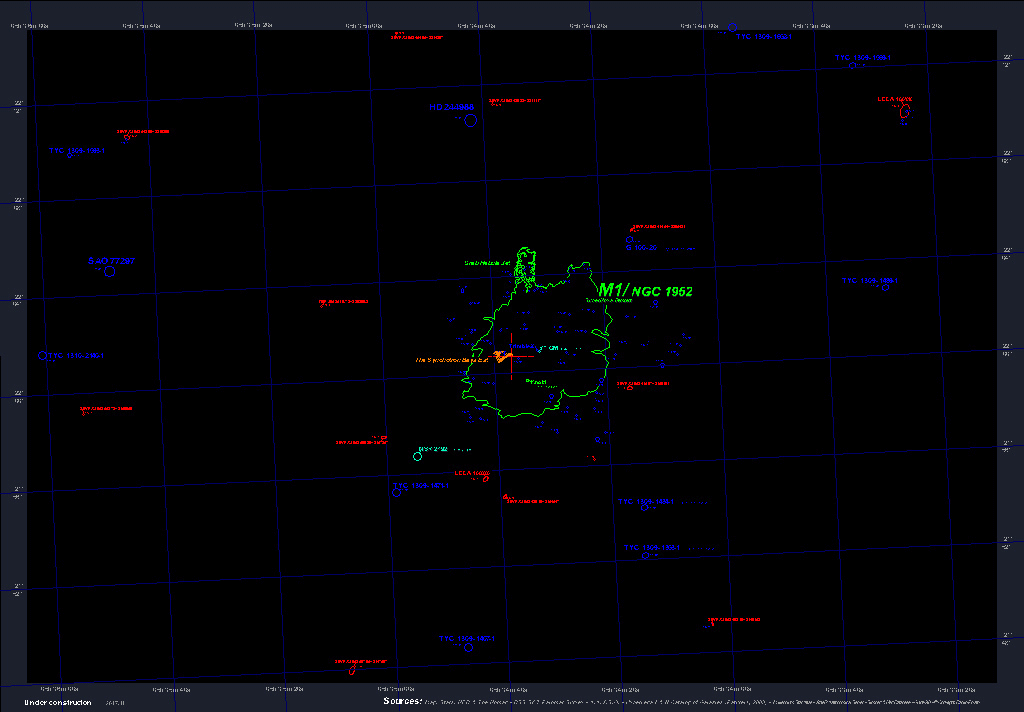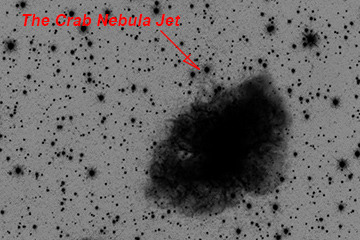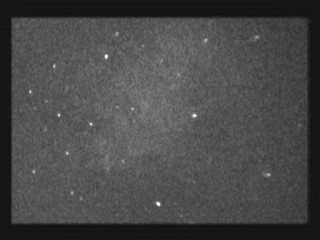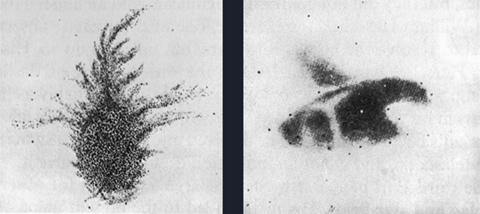 |
||
| Al di la della Luna; Beyond the Moon; Astrophotography; Astrofotografia; Danilo Pivato | ||
 |
||||||
Photo: Danilo Pivato © Copyright: - Images & texts 2017 - All rights reserved |
||||||
The Analysis of Frame
|
||||||
M 1 - Supernova Remnant: in Taurus - NGC 1952; Crab Nebula; Taurus A; 3C 144; LBN 833; Sh2-244; h 357; GN 05.31.5; GC 1157; LBN 184.62-05.65; Mills 05+2A; SNR G184.6-05.8; PKS 0531+21.0 - [field: 1,1° x 1,7°] - - - Mag. Limite Image: 19.7^ - 20.1^ (r) - Fonte: NOMAD - Object Coordinates: RAJ2000.0 05h 34m 31.94s - Dec J2000.0 +22° 00' 52.2" [SIMBAD] - Magnitudine: 8.4^ (b); --.-^ (v), --,-^ (r); ; Surface Brightness: --.-^ - Object Size: 7,0' x 5,0' [SIMBAD] - Position Angle: ---° - Object Classification: 2;3:3 Redshift z(~) V (Km/s): --- - Spectrum: --- Si tratta del famoso residuo di supernova il primo oggetto del Catalogo di Messier pubblicato da Charles Messier nel 1774. La storia della scoperta è alquanto articolata. Alcune cronache riportano che la sera del 28 agosto del 1758 [curiosità personale: questa data anticipa esattamente di due secoli la mia data nascita (!)], Messier cercava di puntare con il suo telescopio la cometa che egli stesso aveva scoperto un paio di settimane prima. Stava osservando dalla sua postazione all'Hotel de Cluny, a Parigi, quando nel campo dell'oculare gli apparve, per puro caso, un oggetto insolito, strano, che descrive in questo modo: "...Quando la cometa del 1758 si trovava fra le corna del Toro, scoprii nei pressi del corno meridionale, ad una breve distanza dalla stella z, Tauri, una pallida luce biancastra, a guisa di una fiammella di candela e priva di stelle nel suo interno. Questa luce somigliava a quella della cometa da me osservata, sebbene mi sembrasse troppo lucente, biancastra e allungata per essere una cometa, le quali prima di allora. mi erano sempre apparse rotondeggianti..." Dopo aver scritto questo appunto Messier ne annotò con cura la posizione. Robert Burnham, Jr nella sua magistrale opera: "Burnham's Celestial Handbook" Vol. 3 (dedica ben 18 pagine al residuo di supernovas M1), attribuendo la scoperta della nebulosa a John Bevis nel 1731, ma aggiunge poi che dopo 27 anni, quindi nel 1758, fu scoperta indipendentemente anche da Messier. La nebulosa M1 possiede una lunga serie di sigle e nomi alternativi; quelli sopra riportati ne sono una minima parte, ma da molti studiosi viene identificata quasi sempre con il nome di Crab Nebula.Tale nome le venne attribuito per la prima volta da Sir William Parsons - Terzo Conte di Rosse - attorno alla metà del 1800. Lord Rosse infatti la osservò con il suo Leviatano, telescopio personale da 1,80m di diametro, rilevando oltre al colore biancastro ed alla sua forma nettamente allungata, anche un certo numero di filamenti irregolari che gli suggerirono il nome. Più in basso sono riportate in lingua originale le note storiche annotate dagli antichi astronomi che osservarono al telescopio per primi la nebulosa M1.
La Crab Nebula è formata dal materiale espulso nell'esplosione della supernova e che si è diffuso su un volume di circa 10 anni-luce di diametro che ancora si espande all'altissima velocità di circa 1.600 km/sec. Emette luce dovuta a 2 componenti principali: una rossastra che forma una caotica ragnatela di filamenti brillanti, con righe d'emissione nello spettro simili a quello delle nebulose gassose diffuse (o planetarie), ed uno sfondo bluastro diffuso di radiazione di sincrotrone altamente polarizzata emessa da elettroni relativistici (cioé elettroni aventi alta energia e velocità vicina alla velocità della luce), che si muovono in un forte campo magnetico. La radiazione di sincrotrone è caratteristica anche di altri fenomeni "esplosivi" che si verificano nel cosmo, per esempio nel nucleo attivo della galassia irregolare M82 e il getto di materia della galassia ellittica gigante M87. Nella fotografia in Luminanza qui sopra riprodotta la Crab Nebula appare distendersi con direzione NW-SE, con dimensioni apparenti di 4'x6'. Con questa scala-immagine, equivalente a 1,11"/pixel, ottenuta con il Takahashi BRC-250 dalla postazione metropolitana, in M1 si distinguono in modo eloquente buona parte dei filamenti irregolari che sono meglio evidenti rispetto alla fotografia eseguita con la Flat Field Camera della Lichtenknecker Optics. Questi filamenti sembrano allontanarsi dal centro fisico della Crab Nebula quasi in modo radiale, proprio dalla posizione centrale occupata dalla Pulsar CM Tau. Buona parte di questi filamenti sono stati catalogati come: ISM, Interstellar Matter (Mezzo Interstellare). A Virginia Trimble si devono i primi studi sul calcolo dei movimenti delle strutture filamentose della Crab Nebula (Maggio 1968) con i quali si tenterà di riportarli applicati all'immagine eseguita con il filtro H-alpha sempre con il Takahashi BRC-250. Secondo gli studi eseguiti sempre dalla Trimble, è risultato inequivocabile che l'espansione di tutta la Crab Nebula scaturisca da un singolo punto. La nebulosa M1 mostra diverse strutture su piccola scala, tra cui diversi "wisps" luminosi situati vicino alla Pulsar che cambiano aspetto e luminosità nell'arco di poche settimane (Scargle 1969, Van den Bergh & Pritchet 1989). Le principali caratteristiche su scala più grande invece includono alcune grandi rientranze o "bays" (baie), lungo il perimetro esterno della nebulosa. Le due più importanti di queste baie si trovano approssimativamente ad est e ovest e sono state classificate come: The Synchotron Bays |
||||||
|
||||||
| Curioso infine come tutta l'area intorno alla Crab Nebula sia quasi del tutto priva di oggetti Deep-Sky appariscenti. Nell'inquadratuira si trovano soltanto alcune deboli galassie appartenenti al catalogo PGC (Principal Galaxies Catalogue), o riclassificate secondo il catalogo LEDA (Lyon-Meudon Extragalactic Database), la più interessante delle quali, nell'inquadratura del Takahashi BRC-250 è PGC 1664818 di magnitudine 16,3^ (r) è situata in alto a destra dell'inquadratura. Anche con il BRC250 non emergono dettagli significativi, se non altro, nelle sue immediate vicinanze, ci sono diverse stelle deboli, la più luminosa delle quali è di 15,7^ (r) magnitudine. | ||||||
| Stelle variabili presenti nell'inquadratura: | ||||||
| V* CM Tau - Pulsar NP 0532; NOVA Tau 1054; SN 1054A; PULS NP 0532; Integral 3; 1CG 185-05; GeV J0534+2159; Tau X-1; PLX 1266; Object Coordinates: RAJ2000.0: 05h 34m 31.3830s - Dec J2000.0 +22° 00' 52.1758" [SIMBAD] - Magnitudine: --,-^ (b); +16,5^ (v), --,-^ (r); ; Surface Brightness: --.-^ - Object Size: -,-' x -,-' [SIMBAD] - Position Angle: ---° - Object Classification: Type SN+PSR [AAVSO] - Redshift z(~) V (Km/s): --- - Spectrum: Cont - In questa immagine realizzata con il Takahashi BRC-250 si vede distintamente la posizione della famosa stella pulsar (V* CM Tau - Pulsar NP 0532). E' la coppia di stelle in prossimità del centro della Crab Nebula, la stella più meridionale. è la famosa pulsar, una stella di neutroni di 28-30 km di diametro la quale ruota su se stessa ad una velocità di 30,2 volte al secondo. Emette impulsi di radiazioni che vanno dai raggi gamma fino alle onde radio e vanta anche il fatto che sia una delle pochissime supernove della Via Lattea osservate nella storia. Questa Pulsar in ogni caso, ad oggi è dato per certo, sia la responsabile della formazione della nebulosa M1. La storia osservativa della Pulsar della Crab Nebula ha origine con i primi tentativi di identificazione nel visibile dell'astro centrale della Nebulosa del Granchio, che portarono all'identificazione, nei pressi del suo centro, di due stelle, note nella letteratura scientifica dell'epoca come North following star (stella che segue a nord) e South preceding star (stella che segue a sud). Nel settembre del 1942 Walter Baade escluse come probabile stella centrale l'astro settentrionale, pur considerando inconcludenti le prove a supporto della stella meridionale [W. Baade, The Crab Nebula, in Astrophysical Journal, vol. 96, 1942, p. 188]. In contemporane Rudolf Minkowski, sostenuto invece da prove di tipo spettrale, ha invece confermato la possibilità che la South preceding star fosse effettivamente la stella centrale della nebulosa, sebbene con un certo grado di incertezza. | ||||||
|
||||||
| Il 12 novembre 2017 ho formulato un sondaggio sui forum italiani per sapere quanti, tra gli osservatori visuali dotati di grandi strumenti, sono stati effettivamente in grado di osservare visualmente la Pulsar della Crab Nebula. Sono curioso di sapere l'esito. Comunque documentandomi adeguatamente in rete ho scovato che diversi osservatori esperti ritengono la Pulsar della Nebulosa del Granchio sia "impossibile" con riflettori da 16"; mentre attraverso strumenti da 20" è visibile soltanto quando le condizioni atmosferiche sono ottimali. Con un 27" la Pulsar diventa un compito abbastanza facile. | ||||||
| V* HD 245010 - NSV 2192; BD+21 894; CSV 100527; GSC 01309-01519; Zinn 0392; GSC 01309-01519 - Object Coordinates: RAJ2000.0 05h 34m 54.55s - Dec J2000.0 +21° 56' 44.8" [AAVSO] - Magnitudine range: 10.2^ (v); --.-^ (b), --,-^ (r); ; Surface Brightness: --.-^ - Object Size: -,-' x -,-' [---] - Position Angle: ---° - Object Classification: --- Redshift z(~) V (Km/s): --- - Spectral type: A2 --- Period: 230 d | ||||||
| History of Observation and description of the M1: | ||||||
| Discovered 1731 by British amateur astronomer John Bevis. | ||||||
The Supernova was noted on July 4, 1054 A.D. by Chinese astronomers as a new or "guest star," and was about four times brighter than Venus, or about mag -6. According to the records, it was visible in daylight for 23 days, and 653 days to the naked eye in the night sky. It was probably also recorded by Anasazi Indian artists (in present-day Arizona and New Mexico), as findings in Navaho Canyon and White Mesa (both Arizona) as well as in the Chaco Canyon National Park (New Mexico) indicate; there's a review of the research on the Chaco Canyon Anasazi art online. In addition, Ralph R. Robbins of the University of Texas has found Mimbres Indian art from New Mexico, possibly depicting the supernova. The Supernova 1054 was also assigned the variable star designation CM Tauri. It is one of few historically observed supernovae in our Milky Way Galaxy. |
||||||
Charles Messier: 1758 September 12. 1. 5h 20m 02s (80d 00' 33") +21d 45' 27"
Nebula above the southern horn of Taurus, it doesn't contain any star; it is a whitish light, elongated in the shape of a flame of a candle, discovered while observing the comet of 1758. See the chart of that comet, Mem. Acad. of the year 1759, page 188; observed by Dr. Bevis in about 1731. It is reported on the English Celestial Atlas. [A note in Messier's handwriting added in the margin of his copy of the Connoissance des Temps for 1783 reads:] [In the Mem. Acad. for 1959, the discovery announce for this nebula is described in the memoir by Delisle on the comet of 1758, Comet De la Nux: Report of M1's discovery by Messier, from: Joseph Nicholas Delisle, 1759. Mémoire sur la comète de 1758 (Memoir on the comet of 1758). Mém. Acad. 1759, p. 154-188] [p. 165. Discovery of a new nebula.] [On August 28, 1758,] M. Messier discovered there a light almost resembling that of the Comet, but which was even more vivid, whiter & a bit more elongated than the Comet he observed at that time: That comet had appeared to him always almost round in its coma, without an appearance of either a tail or a beard. When the discovery of this new light or nebulous star didn't come to an end of the observations of that morning session, before the sky covered, M. Messier didn't have the time to determine its exact situation with respect to the neighboring stars of the southern horn of Taurus: there will be reported the details of observations, & there will be marked the precise position of that new nebula, its magnitude & the degree of its light compared to that of the Comet of 1758, [..] |
||||||
Johan Elert Bode: A nebula without stars. Taurus 292 [From: Vorstellung der Gestirne auf XXXIV Kupfertafeln (Introduction to the Stars on 34 Copper Plates), 1782. Here p. 18, plate 14] |
||||||
Frederick William Herschel: [1784. PT Vol. LXXIV=74 (1784), p. 437-451, here p. 440]
".. To these may added the 1st [M1], 3d, 27, 33, 57, 79, 81, 82, 101 [of Messier's catalog], which in my 7, 10, and 20-feet reflectors shewed a mottled kind of nebulosity, which I shall call resolvable; so that I expect my present telescope will, perhaps, render the stars visible of which I suppose them to be composed. .." [1814. PT 1814 (vol. 104), p. 248-284, here p. 260] [1818. PT 1818 (vol. 108), 429-470, here p. 345. Reprinted in: Scientific papers, Vol. II, p. 595] |
||||||
| John Frederick William Herschel: h 357 = M1. Sweep 59 (February 24, 1827). RA 5h 24m 15.7s, NPD 68d 6' 36" (1830.0) [Right Ascension and North Polar Distance] vL; E; vglbM; r; 4'l, 3'br; pos of longer axis n p to s f. A fine object. See fig. 81. Very large; extended; very gradually brightening a little toward the middle; mottled; 4' long, 3' broad; position angle of longer axis north preceding to south following. A fine object. See figure 81. Plate XVI, Fig. 81. [p. 503] |
||||||
William Henry Smyth: CCXII [212]. M1.CCXII. 1 M. Tauri. AR 5h 24m 51s, Dec N 21d 54'.2 Mean Epoch of Observation: 1836.99 [Dec 1836] [with drawing] A large nebula, pearly white, about a degree north-west of the star Zeta on the tip of the Bull's southern horn, and on the outskirts of the galaxy. It is of an oval form, with its axis-major trending np to sf, and the brightest portion toward the south. Sir John Herschel registers this in his Catalogue of 1833, as a "barely resolvable cluster;" and figures it with a fair elliptical boundary. He applied his 7, 10, and 20-foot reflectors, and endeavoured to ascertain its relative distance by a modification of their space-penetrating capacities. "As all the observations," he concluded, "of the large telescopes agree to call this object resolvable, it is probably a cluster of stars at no very great distance beyond their gauging powers; its profundity may therefore be of about the 980th order." All this shows the difficulty of what, to my view, is rather a milky nebulosity than a cluster. Thhe powerful telescope constructed by Lord Rosse, however, not only displays the component stars distinctly, but also shows several fringy appendages around, and a deep bifurcation to the south. So do siderial wonders increase with our means of optical practice! This fine nebula is remarkable as having been discovered by M. Messier - the comet-ferret of Louis XV. - while observing Zeta Tauri and a comet in 1758, when he cought up a "a whitish light, elongated like the flame of a taper." This accident induced him to form his wellknown and useful Catalogue of nebulae and clusters, from the observations of himself, La Caille, and Méchain, in order to prevent astronomers from mistaking any of those for comets; and the List of 103 which he furnished to the public, was considered to have scraped them all together, as far as climate permitted. Whence D'Alembert, speaking of Messier, observed, "on ne peut s'empêcher de regretter qu'un Observateur si exact et si plein de zèle, n'ait pat été placé dans un climate plus heureux." But the progress of astronomy has not depended on climate, as the names Tycho, Römer, Flamsteed, Bradley, Hevelius, Huygens, Schroeter, Olbers, and others of the Iera Phalanx [written in Greek], abundantly testify. Indeed, in the department before us, within twenty years of Messier's publication, the illustrious Sir William Herschel increased the 103 by 2500 new members, in the decried climate of England, thus affording a strong instance how moral causes can control the physical. Piazzi, whose observatory in the Conca d'Oro was to the eye most charmingly situated, was so troubled with a peculiar flickery hot aerial refraction, that one night he exclaimed to me, "Ah, Greenwich is the paradise for an observer!" It is rather curious, on recollecting that this nebula was the first caught up in seeking the comet of 1759, that it was also a mare's nest to more than one astronomical tyro in August, 1835, when on the look-out for the return of Halley's comet, in the very month in which it had first been seen seventy-five years before: and Zeta Tauri was also the star which served as "pointer", on that interesting advent. |
||||||
|
||||||
| Thomas William Webb: Oblong; pale; 1 deg np [North Preceding, NW of] Zeta [Tauri]. Espin: Winlock, gaseous spectrum. |
||||||
John Herschel, General Catalogue: GC 1157 - GC 1157 = h 357 = M1. RA 05h 26m 3.9s, NPD 68d 5' 10.5" (1860.0) [Right Ascension and North Polar Distance] vB; vL; E135deg +/-; vglbM, r. 12 observations by W. & J. Herschel. Very bright, very large, extended along position angle approximately 135 deg; very gradually brightening a little toward the middle, mottled. Remark: Figures in P.T. 33 [JH 1833], plate viii, Fig. 81; P.T. 44 [Lord Rosse, 1844], plate xix, Fig. 81; R. di. (The woodcut diagrams in Lord Rosse's paper, PT 1861); d'Arr. (D'Arrest's Inaugural dissertation and description of the Copenhagen Equatorial, 1861), plate ii, Fig. 4; Lass. (Lassell's Memoirs in vol xxiii of the Transactions of the Royal Astronomical Society), plate ii, Fig. 1. |
||||||
| Padre Pietro Angelo Secchi: [Descrizione del nuovo osservatorio del Collegio Romano, 1856] [Drawing on Plate IV, Fig. 8] |
||||||
| William Lassell: [Memoirs of the Royal Astronomical Society, Vol. XXXVI (36)] [Drawing on Plate II, Fig. 6] |
||||||
John Louis Emil Dreyer: (1877) - GC 1157. The "Crab Nebula." No published drawing is satisfactory: The one in Phil. Trans. 1844 (Rosse 1844) is not at all like the object. The diagram in Phil. Trans. 1861 (Rosse 1861) gives a very fair general idea of its form, the dark lanes, &c. |
||||||
John Louis Emil Dreyer: NGC 1952 NGC 1952 = GC 1157 = h 357; Bevis 1731, M 1. |
||||||
John Ellard Gore: [The Observatory, Vol. 25, pp. 264-269, here pp. 264-265.] Messier 1. R.A. 5h 28m.5, N. 21d 57'. - The famous "crab nebula" in Taurus. It lies about 1 degree north preceding the star Zeta Tauri. It was first seen by Bevis in 1731. It was again seen by Messier in 1758 while observing the comet of that year, and its rediscovery induced him to form his catalogue of nebulae, to help observers in distinguishing these objects from comets. Sir John Herschel thought it was a cluster of stars at a distance "of about the 980th order," that is 980 times the distance of Capella or Vega. Lord Rosse's telescope is said to have resolved it into stars, but photographs taken by Dr. Roberts in 1892 and 1896 show a very nebulous appearance, and with but little of the "crab-like" form depicted in Lord Rosse's drawing. |
||||||
Camille Flammarion: [L'Astronomie. Revue de la Societé Astronomique de France, pp. 385-400 (November 1917), here pp. 396-397. With a photo and a drawing] M.1. Taurus. Nebula with stars. Messier's Description: "Nebula above the southern horn of Taurus, it doesn't contain any star; it is a whitish light, elongated in the shape of a flame of a candle, discovered while observing the comet of 1758." Messier has added, in the margin, a writing which is still very readable: "This nebula is reported in the great english atlas. Seen by the doctor Bévis, in 1731, according to a letter to me from him, of June 10, 1771." Seen on August 28, and the position determined on September 12 (1758). It is on lurking on the return of the comet of Halley, of which we have talked more extensively, that Messier did this first discovery, near the star Zeta Tauri. Observed by John Herschel, Admiral Smyth, d'Arrest, Lord Rosse, Schoenfeld, Lassell, Secchi, Dreyer, Webb, etc., it has received by Lord Rosse the name Crab Nebula. At most, it offers a little resemblance with the crabs which one finds at the shore of the English Channel, irregularly round, and much more like the elongated figure which I have published in Les Étoiles [The Stars], after Lord Rosse. The diverse drawings which have been made of it differ enormously. This nebula has been photographed often enough at Juvisy since 1902. We have reobserved it in September and October 1917. The photograph reproduced here has been taken by M. Quénisset, on October 18 with a Voigtlender lens (exposed 1h 30m), and the drawing has been made by him on October 15. Its shape is oval, almost quadrangular, measures 5' 1/2 in length and 3' 1/2 in width. Partly resolvable in more powerful instruments. |
||||||
Heber Doust Curtis: [Descriptions of 762 Nebulae and Clusters photographed with the Crossley Reflector. Publ. Lick Obs., No. 13, Part I, p. 9-42]
NGC 1952, RA= 5:28.5, Dec=+21:57. The ``Crab'' Nebula in Taurus; [Publ. Lick Obs.] Vol. VIII, Plate 9. Planetary ? 0 s.n. [The Planetary Nebulae. Publ. Lick Obs., No. 13, Part III, p. 55-74] |
||||||




